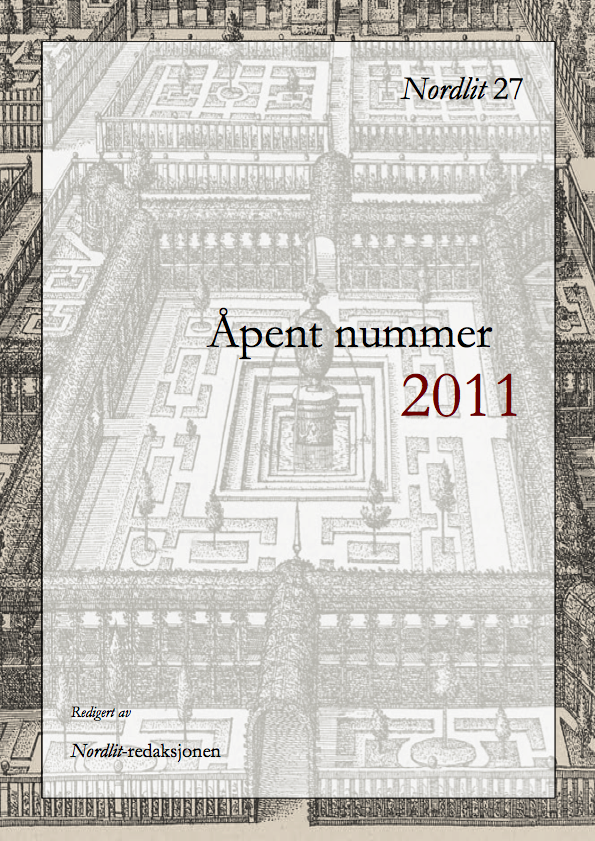Kroppslighet og jomfrukur i Hans E. Kincks tragedie Den sidste Gjest (1910)
DOI:
https://doi.org/10.7557/13.1805Emneord (Nøkkelord):
Pietro Aretino, Hans E. Kinck, tragedie, kroppslighet, metaforikk, jomfrukur, prostitusjon, pedofili, anima, manierismeSammendrag
In his play on Pietro Aretino (1492-1556), the Norwegian dramatist and novelist Hans E. Kinck (1865-1926) focuses on his character's relationship to the body and use of young women, in particular the young girl, Perina. A writer of great repute among his contemporaries Aretino is today known for his letters, plays, scandalous dialogues and pornographic sonnets in which grotesque images of the body are frequent.Kinck turns the Italian letterato both into a tragic victim of his own drives and a ruthless victimizer, although he in the process must avoid many aspects of Aretino's writing and character that it would be impossible to reproduce in print at the time, but in so doing he both rejects and redescripts metaphors for the body and writing we recognize from Rabelais, Shakespeare, and Nashe. Aretino's famed obesity and incessant appetite become metaphors for Aretino's struggle for fame and immortality, but are also signs of the fetishization and expenditure of young girls in Early Modern Venetian society, and in the Europe of Kinck's own time. This reading "against the grain" tries to ease out the actuality of the play and the reason for the different data Kinck gives for Perina's age in the play and in En Penneknegt (1911).









